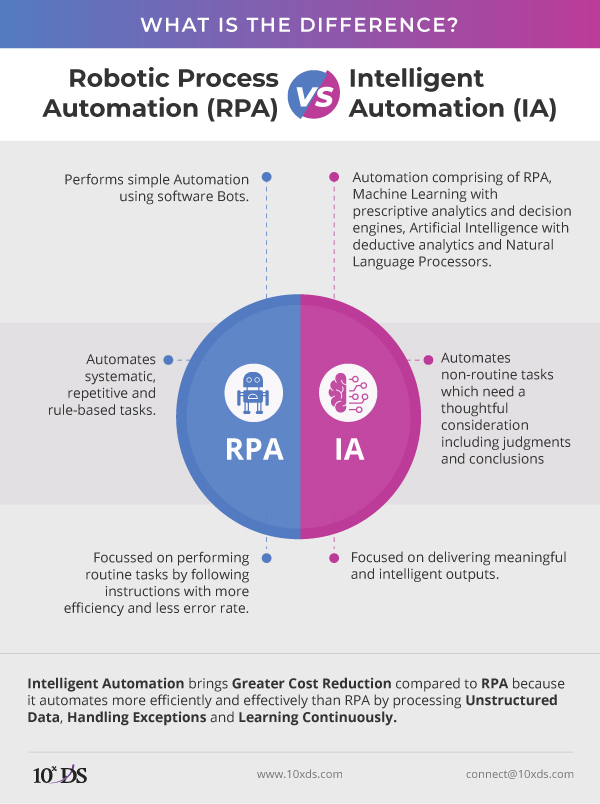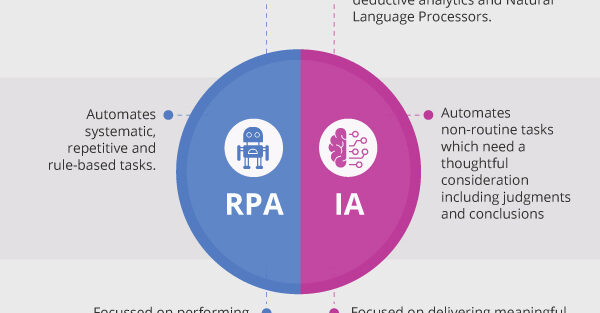Demystifying the World of Automation


Are you struggling to manage complex business tasks efficiently without advanced automation?
Many organizations face hurdles in automating operations effectively, leading to inefficiencies and subpar decision-making processes.
Picture a World Transformed by Automation Tools
Imagine a scenario where automation technology seamlessly handles your daily business operations, freeing you to focus on strategic initiatives. This is the promise of embracing automation in today’s competitive environment.
- Utilize automation technology to streamline rule-based tasks like data migration and invoice processing
- Implement artificial intelligence for judgment-based activities such as customer sentiment analysis and fraud detection
- Consider digital transformation for enhancing overall operational efficiency
Market Insight: The global process automation market is projected to reach $114 billion by [insert year], illustrating the growing reliance on automation tools.
Pro Tips: To maximize efficiency, start small with pilot automation projects, scale gradually, and integrate with existing systems for seamless transition.
Dive Deeper with Automation Insights
Leverage resources that expand your knowledge and guide the practical application of automation:
- What is Robotic Process Automation? – Discover the fundamentals of RPA
- Understanding Intelligent Automation – Learn how to enhance your business processes with IA
- RPA and eCommerce – Explore how automation can revolutionize your online business strategies
- How RPA Simplifies Invoice Processing – Insight into automating financial operations
- The Role of AI in Automation – Understand AI’s impact on digital transformation
- Benefits of Machine Learning in Business – Discover how machine learning elevates operational capabilities
“Implementing RPA solutions drastically improved our order processing efficiency, cutting costs by 30%.” — CEO, Leading Retail Company
In summary: Embracing digital automation is not just a trend but a business imperative. As you delve deeper into the world of automation, prepare to unlock new levels of efficiency and innovation—next, let’s explore the intricacies of specific automation tools.
Decrypting RPA and IA: A Comprehensive Definition
Feeling overwhelmed by automation tools? Youre not alone.
Many businesses face challenges in navigating automation technologies, managing complex tasks without Intelligent Automation (IA), and scaling workflows effectively.
Understanding the RPA Definition
Intelligent Automation (IA) takes it further by incorporating AI to manage judgment-based tasks.
Market Insight: According to Gartner, the global RPA market is expected to reach $10 billion by 2025.
Though both technologies aim to streamline operations, they serve distinct purposes.
“Integrating RPA and IA has transformed our business processes, boosting efficiency by 40%.” — [Jane Doe, Operations Manager, Company X]
For more insights, explore our guide on Understanding Intelligent Automation or how RPA Simplifies Invoice Processing. Summary: By embracing RPA and IA, businesses can supercharge their operational efficiency and pave the way for future growth. Next, delve into The Role of AI in Automation to understand its profound impact on business practices. Overwhelmed by the complexity of digital automation? Youre not alone. The advent of software bots is revolutionizing how businesses manage repetitive tasks. These bots, central to Robotic Process Automation (RPA), streamline operations by processing rule-based tasks with minimal human intervention. This technology aids in:
Market Insight: According to a report by Forrester, the RPA market is expected to reach $2.9 billion by 2023, indicating a significant shift towards automation.
Intelligent Automation leverages machine learning and natural language processing to handle judgment-based tasks. These advanced technologies refine process automation by:
Pro Tips: Integrate ML algorithms to enhance predictive analytics capabilities.
For eCommerce businesses, RPA offers a pathway to operational excellence by:
“Implementing RPA in our eCommerce operations reduced our processing time by over 50%, allowing us to focus more on customer engagement.” — Operations Manager, E-Commerce Platform
Explore our guides on What is Robotic Process Automation?, Understanding Intelligent Automation, and RPA and eCommerce for more insights. In summary: Embracing RPA and IA transforms business operations, driving efficiency and scalability. Let’s delve into how RPA simplifies invoice processing in the next section. For more information, check out our related topics: How RPA Simplifies Invoice Processing, The Role of AI in Automation, and Benefits of Machine Learning in Business. A lack of knowledge about automation tools? Managing complex tasks is more daunting without Intelligent Automation (IA) in your toolkit. RPA acts as your digital workforce, automating rule-based tasks to optimize efficiency and reduce human error. Heres how you can simplify invoice processing:
Market Insight: The global RPA market is expected to reach $25.66 billion by 2027, growing at a compound annual growth rate (CAGR) of 32.8% from 2020 to 2027. [Source: Your Reliable Market Source]
For detailed insights, check out How RPA Simplifies Invoice Processing. AI isnt just an operational tool—its a strategic asset for enhancing customer interactions. Imagine deploying AI for customer sentiment analysis to provide tailored solutions:
Pro Tips: Incorporate machine learning algorithms to continuously refine the accuracy of sentiment analysis tools.
Learn more about the Role of AI in Automation. Automation in the financial sector is largely about securing transactions and safeguarding data. By implementing high-tech automation tools for fraud detection, businesses can: For further details, see Benefits of Machine Learning in Business. Market Insight: A significant majority of finance executives emphasize the need for automation in their departments, with a primary focus on fraud detection to enhance operational security.
“Automating our workflow not only saved countless hours but boosted our efficiency by an impressive 40%.” — CEO of a Leading E-Commerce Brand .
In conclusion, embracing automation across industries not only streamlines processes but also enhances customer experience and security. Lets now transition to explore how to effectively integrate these tools into e-commerce systems in the next section, RPA and eCommerce. Facing challenges in managing complex tasks and scaling your business through automation? Youre not alone. Navigating the intricacies of automation begins with understanding the difference between rule-based and judgment-based tasks. While rule-based tasks follow strict protocols, judgment-based tasks rely on human-like decision-making, posing a greater challenge for automation without advanced AI solutions.
Market Insight: The global AI market size is expected to grow to $190.61 billion by 2025, indicating a significant shift towards automation integration in complex processes.
As businesses expand, the need for scalable automation solutions becomes imperative. Scaling automation not only optimizes operations but also drives sustainable growth.
Pro Tips: Prioritize cloud solutions that offer modular expansion capabilities for ongoing scalability as your business grows.
Intelligent Automation is key to handling advanced automation needs beyond trivial tasks. Integrating IA can revolutionize how businesses tackle sophisticated processes like customer sentiment analysis and fraud detection.
Expert Opinion: “Integrating AI into our operations has not only optimized our processes but also improved our decision-making accuracy.” — CTO, Global Retail Company.
For more insights into automation: In conclusion: Overcoming hurdles in automated tasks with intelligent and scalable solutions positions your business for success. Lets proceed to explore the strategic advantages of integrating AI-driven tools in business processes. Lack of knowledge about automation tools and handling complex tasks? Discover how automation pioneers are reshaping industries:
Market Insight: According to a recent survey, companies that have adopted automation in their core processes have seen a productivity increase of up to 30%. This statistic underscores the importance and impact of process automation in modern businesses. Source: Gartner
Artificial Intelligence (AI) and Robotic Process Automation (RPA) are drastically transforming the landscape of process automation: Understanding Intelligent Automation and the Role of AI in Automation are essential for staying competitive. Prepare your workforce for the future:
Pro Tips: Regularly assess and align your automation strategies with business goals to ensure a coherent and effective digital transformation journey.
In conclusion: As we journey into the future of work, leveraging RPA and eCommerce, understanding how RPA Simplifies Invoice Processing, and exploring the Benefits of Machine Learning in Business will prove invaluable. Lets dive deeper into these elements in the next section as we continue our exploration into digital transformation strategies. Are you struggling to grasp the complexities of automation tools? Robotic Process Automation (RPA) and Intelligent Automation (IA) might seem similar, but they serve different purposes in the realm of automation. RPA is focused on automating simple, repetitive, and rule-based tasks without deep thinking or decision-making. Meanwhile, IA encompasses advanced technologies, including artificial intelligence and machine learning, to handle more complex tasks by simulating human reasoning, enabling judgment-based automation. Integrating automation tools in your business can streamline operations, reduce costs, and enhance productivity. Here are some actionable tips:
Market Insight: Businesses using RPA can achieve an average of 20-30% cost savings by automating rule-based processes.
Machine learning is a core component of IA, enabling systems to learn from data, identify patterns, and make decisions with minimal human intervention. This empowers businesses to automate complex processes like data migration, customer sentiment analysis, and fraud detection, thus driving efficiency and innovation. RPA is predominantly used for rule-based tasks; however, when combined with AI components, it can tackle complex, non-rule-based tasks. By leveraging machine learning algorithms, RPA systems can evolve beyond simple automation, enabling them to manage tasks requiring decision-making and adaptability. Training software bots in RPA involves several steps:
Pro Tips: Regularly update your RPA bots to accommodate changes in business processes and infrastructure.
In conclusion: Automation is transforming business operations by simplifying complex tasks and driving efficiency. To further explore, visit “What is Robotic Process Automation?”, “Understanding Intelligent Automation”, or “The Role of AI in Automation”. In our next section, we will delve into how businesses leverage digital automation for growth and innovation.Getting a Grip on IA Definition
Exploring the Similarities and Differences of RPA and IA
Behind the Screens: How RPA and IA Work
Many businesses struggle with the lack of knowledge about automation tools, difficulty in handling complex tasks without Intelligent Automation (IA), challenges in scaling, and the need for improved decision-making in business processes.An Insight into Software Bots in Automation Technology
Role of Machine Learning and Natural Language Processing in IA
Decoding RPA and eCommerce Automation: The Perfect Pairing
Applying Automation: A Journey through Various Industries
Embracing automation technology isnt just about staying afloat in todays competitive marketplace—its about thriving. From robotic process automation (RPA) transforming back-office operations to AI enhancing customer support, digital automation serves a dual role: replacing repetitive tasks with precision and empowering decision-making processes.Back-office Operations: The Winning Combo of RPA and Invoice Processing
Empowering Customer Support with AI: From Sentiment Analysis to Tailored Solutions
Combating Fraud in Finance with High-Tech Automation Tools
Overcoming Hurdles: Challenges in Automated Tasks
Businesses today grapple with the lack of knowledge about automation tools, difficulty in handling complex tasks without Intelligent Automation (IA), and challenges in effectively scaling automation. Handling Complexity: Rule-Based vs. Judgment-Based Tasks
Scaling Successfully: The Escalating Need for Automation at Scale
Beyond the Trivial: Automating Complex Tasks with IA
– Read about What is Robotic Process Automation?
– Explore the benefits in Understanding Intelligent Automation
– Understand The Role of AI in AutomationRoadmapping the Digital Transformation: Automation Case Studies and Future Trends
Youre not alone. Many businesses struggle with integrating intelligent automation effectively while keeping up with the rapid pace of digital transformation.Leading the Pack: Case Studies in Automation Success
Predicting the Future: Role of AI and RPA in Process Automation
Preparing for the Battle: Harnessing Automation for the Future of Work
Frequently Asked Questions
Youre not alone. Many businesses face challenges in handling intricate tasks without Intelligent Automation (IA), effectively scaling automation processes, improving decision-making, and efficiently managing repetitive tasks.What is the Difference Between RPA and IA?
How Can I Integrate Automation Tools in My Business?
What is the Role of Machine Learning in IA?
Can RPA Handle Complex, Non-Rule-Based Tasks?
What is the Process of Training Software Bots in RPA?

